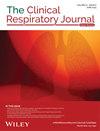Electrical Impedance Tomography–Guided Airway Clearance in Elderly Patients With Severe Pneumonia: A Prospective Study
Abstract
Background
Elderly patients are prone to secretion retention and exacerbated lung infections due to weakened respiratory muscle strength and reduced ability to cough and expectorate. Airway clearance techniques (ACTs) can help to clear airway secretions, but objective bedside assessment of secretion clearance efficacy is lacking. Electrical impedance tomography (EIT) can dynamically monitor lung ventilation and provide a basis for clinical decision-making.
Methods
This study was a prospective randomized controlled trial that included 50 elderly patients with severe pneumonia, who were randomized into EIT and non-EIT groups. The EIT group received personalized ACTs guided by real-time EIT imaging with dynamic adjustment of posture, percussion intensity, and active circulatory breathing technique (ACBT) frequency, whereas the non-EIT group received fixed-schedule ACTs (postural drainage every 2 h + percussion/vibration twice daily) without EIT feedback. The main observation indices included Clinical Pulmonary Infection Score (CPIS), respiratory mechanics indices, blood gas analysis indices, and extubation success rate.
Results
The EIT group showed significantly lower CPIS scores (p = 0.0137 on Day 7), higher dynamic compliance (p = 0.0193), lower airway resistance (p = 0.0039), lower peak airway pressure (p = 0.0288), and higher oxygenation index (p = 0.0143 on Day 5 and p = 0.0005 on Day 7) than the non-EIT group. The extubation success rate was significantly higher in the EIT group (88% vs. 56%, p = 0.0255). Additionally, the EIT group demonstrated progressive improvements in ventilation in specific regions (D7 vs. D1: p = 0.0004 for region of interest [ROI]3; p = 0.0059 for ROI4) and a significant decrease in the global inhomogeneity index at D7 (D7 vs. D1: p = 0.0025).
Conclusion
EIT-guided ACT is safe and enhances treatment efficacy by significantly improving respiratory function and extubation success rate in elderly patients with severe pneumonia.


 求助内容:
求助内容: 应助结果提醒方式:
应助结果提醒方式:


